McClain's:
You have strong opinions about art and its definition. How did you come to the decision of accepting all work that is submitted to the KIWA exhibition? How do you accommodate a class full of students with varying styles, concepts and their own views of art?
Richard Steiner:
KIWA’s purpose is to show what all is being done in the world in woodblock printmaking. Who am I to impose my likes and dislikes? I only provide the wall space; anyone can hang whatever they like. I always have at least 4 or 5 judges, never one or two, to insure fairness. Until this last exhibition, we accepted everything; but this time we rejected two entries: one because it was not woodblock; the other because it went beyond art into remarkably offensive political/ethnic/religious mode. It was not bad art; it was unforgivably insulting. Almost unanimously it was rejected.
In my printmaking classes and workshops, I never, but never, impose my opinions on the students. I do not give assignments. I want to only see what the student has in his or her heart. Of course, some students do not have anything, or not much, in their hearts. That is, they do not yet know how to reach into themselves and pull out the countless ideas resident there. My task as a teacher is to show them that these ideas are in them and are unique to them only. These images and the subsequent prints are “images” of themselves. That is my main goal. Leading up to that, I may have to guide them along the path of basic art rules; that is, color balance, perspective, use and misuse of corners; composition; space and line balance; whatever they may lack in the basics. Subtly, or perhaps not so subtly, I do talk about my ideas of what is in all our hearts/minds, which is unique and special to us individually. If a student wants to make a print of a bunch of flowers on the table, OK. But I encourage them to do it creatively, not photographically. Playing around with the thickness of lines, the odd use of colors, shadows, rounding off square things, squaring off round things, etc., begins to let them see possibilities.
I have always thought that real art, true art, was always self-portraiture; the artist was showing something of himself or herself in the artwork, subtly, hidden in the shrubbery, perhaps, but in there somewhere. All the rest of the stuff hanging on the walls is decoration. Good decoration often, but not art. I am mostly interested in myself. That is, in the way I am seeing the world and life around me, and the way I am seeing me, too. Flowers in a pot, kittens on a rug – these are only artistic exercises if rendered photographically. Abstract art is a fraud; where is the depth, the humanity? The insight into life? The psychology of the artist? A painting by a madman may be a madman’s painting, but does not answer the question of why he is mad, and that is the most interesting, telling, reveling point.
To see more of Richard's work, please visit his website:
http://www.richard-steiner.net/
For more information about KIWA visit their website:
http://www.kiwa.net/
|
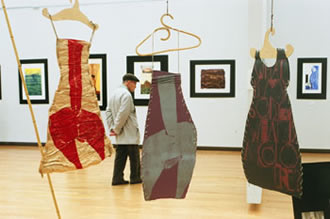
2003 KIWA Exhibition
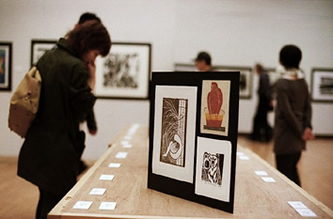
2007 KIWA Exhibition
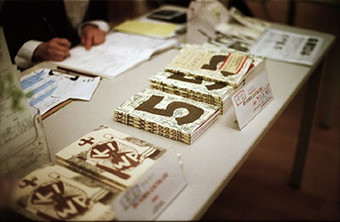 2003 & 2007 KIWA catalogs (catalogs full color and the dust jackets have been designed and carved by Richard Steiner, KIWA president. Printing was by traditional woodblock printing workshops in Kyoto. Every catalog is signed and red-stamped in a numbered edition.) 2003 & 2007 KIWA catalogs (catalogs full color and the dust jackets have been designed and carved by Richard Steiner, KIWA president. Printing was by traditional woodblock printing workshops in Kyoto. Every catalog is signed and red-stamped in a numbered edition.)
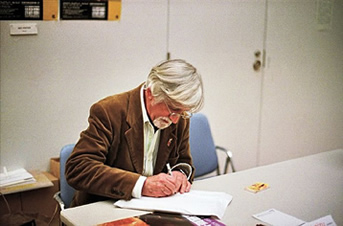 Richard Steiner at 2007 KIWA Exhibition Richard Steiner at 2007 KIWA Exhibition
|
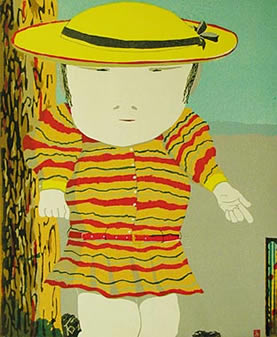 Gray Ears
Gray Ears 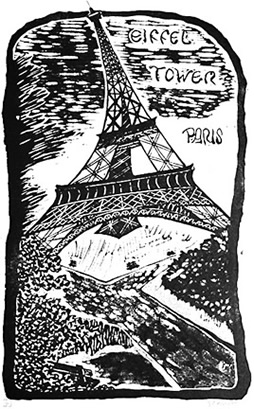
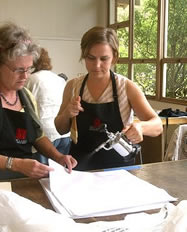
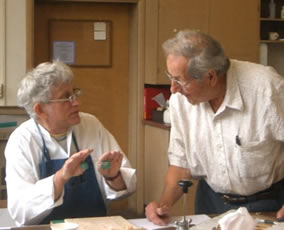
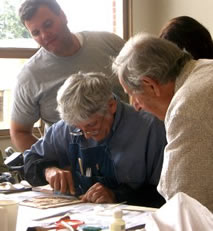
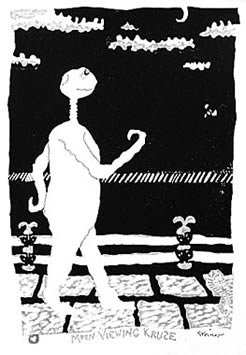
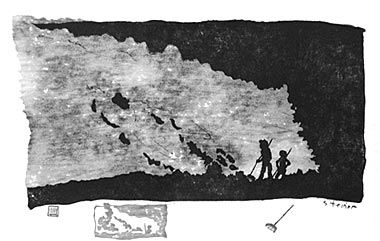
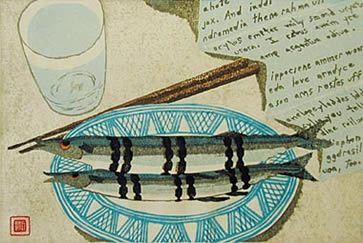
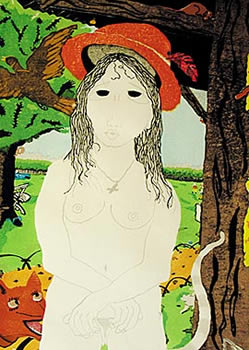


 2003 & 2007 KIWA catalogs (catalogs full color and the dust jackets have been designed and carved by Richard Steiner, KIWA president. Printing was by traditional woodblock printing workshops in Kyoto. Every catalog is signed and red-stamped in a numbered edition.)
2003 & 2007 KIWA catalogs (catalogs full color and the dust jackets have been designed and carved by Richard Steiner, KIWA president. Printing was by traditional woodblock printing workshops in Kyoto. Every catalog is signed and red-stamped in a numbered edition.)  Richard Steiner at 2007 KIWA Exhibition
Richard Steiner at 2007 KIWA Exhibition